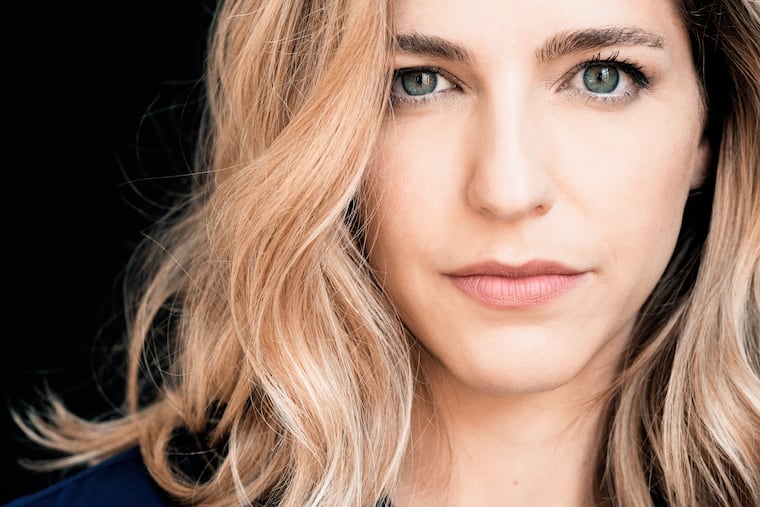Karina Canellakis makes her thrilling Philadelphia Orchestra debut
The conductor — trained at the Curtis Institute in violin and at Juilliard in conducting — led Beethoven with pianist Emanuel Ax.

Had Karina Canellakis made her Philadelphia Orchestra debut Thursday night with just a thorny Lutoslawski score and an atmospheric 2013 piece by New York composer Zosha Di Castri, she would have impressed mightily.
But the conductor emerged as a full personality where you might have expected the greater focus to be elsewhere — on the soloist in a piano concerto.
Emanuel Ax was no wallflower. In Beethoven’s Piano Concerto No. 2, he was his usual elegant, insightful self. But Canellakis has the spark of interpretive imagination. Even before the piano makes its entrance a few minutes into the Beethoven, she was detailing the music in the same way she has in opera and orchestra performances with the Curtis Institute of Music since her 2004 graduation there in violin. (Her conducting degree is from the Juilliard School.)
The physical cues Canellakis gives are both crisp and dramatic, even if the ears tell us that the more important work goes on in rehearsal. Those opening three minutes before the piano’s entrance were marked with momentum and muscularity, particularly in the strings. Certain phrases were launched with a subtle gust.
The stylistic gloss she gave to this somewhat Mozartian score was pronounced, but hardly self-indulgent. When Ax entered, you realized she was anticipating his approach, and it all felt of a piece. The pianist had presence as well as a pearly tone in the first movement. The second was something more. Ax is a touching player — steady until just the right moment, when he pushes the intensity. For him, forbearance is an art form.
My favorite stretch: those passages of floating near the end of the second movement when orchestra and pianist “speak” back-and-forth to each other in the most tender way imaginable. Ax’s sound echoed in the body of his instrument and into Verizon Hall. The orchestra whispered.
There was an encore, and the audience took the first few notes of it as a joke, laughing at a pianist of this level rolling out the beginner favorite Bagatelle No. 25 in A Minor, “Für Elise,” by Beethoven. It was no joke of a performance, but a surprising lesson in fluidity and ease — as if Georges Perrier had just dropped in to prepare a plate of scrambled eggs.
Canellakis is leading the Di Castri and Lutoslawski works elsewhere, which is not to take away anything from her performances of them Thursday night. Both scores are complex and rely on careful distillation of orchestral colors, some of which are highly unusual. If Di Castri’s Lineage, as the program note says, mixes modern sounds with an imagined folk music, it was hard to discern the folk. Suspenseful, nocturnal, and deploying a level of dissonance not far beyond late Debussy, its best quality is its dream-state sense of altered reality.
The folk element in Witold Lutoslawski’s Concerto for Orchestra is easy to hear. The piece, from 1954, has something in common with its Bartok relative, and while it does highlight individual instruments — piccolo player Erica Peel and violinist Juliette Kang found beautiful colors — the more striking aspects of the piece are the larger orchestral textures that range from lush to savage.
Lutoslawski, who died in 1994, is not well known to most listeners, but Canellakis made a convincing case for his accessibility. This orchestra’s virtuosity helped. What is that second movement “Capriccio” if not a close cousin to cinematic Harry Potter? It passed with the aery flutter of a golden snitch.
Additional performance: Saturday at 8 p.m. in Verizon Hall, Broad and Spruce Streets. Tickets are $10-$39. 215-893-1999, philorch.org.